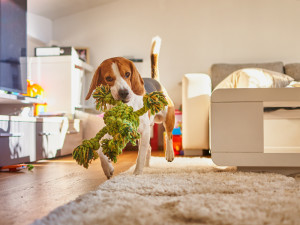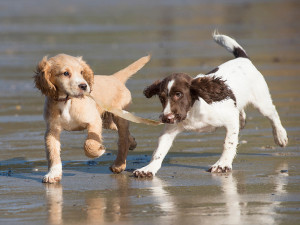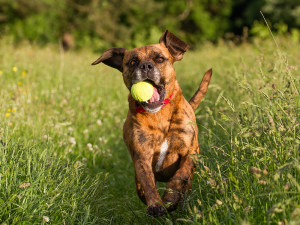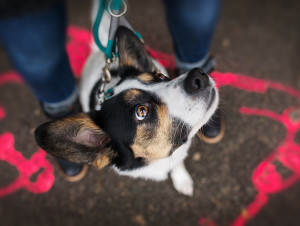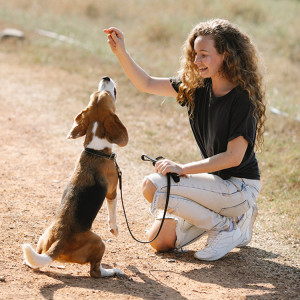Dog Training 101: What to Teach Your New Dog
In between cuddle sessions, work on these eight basic cues with your pup.
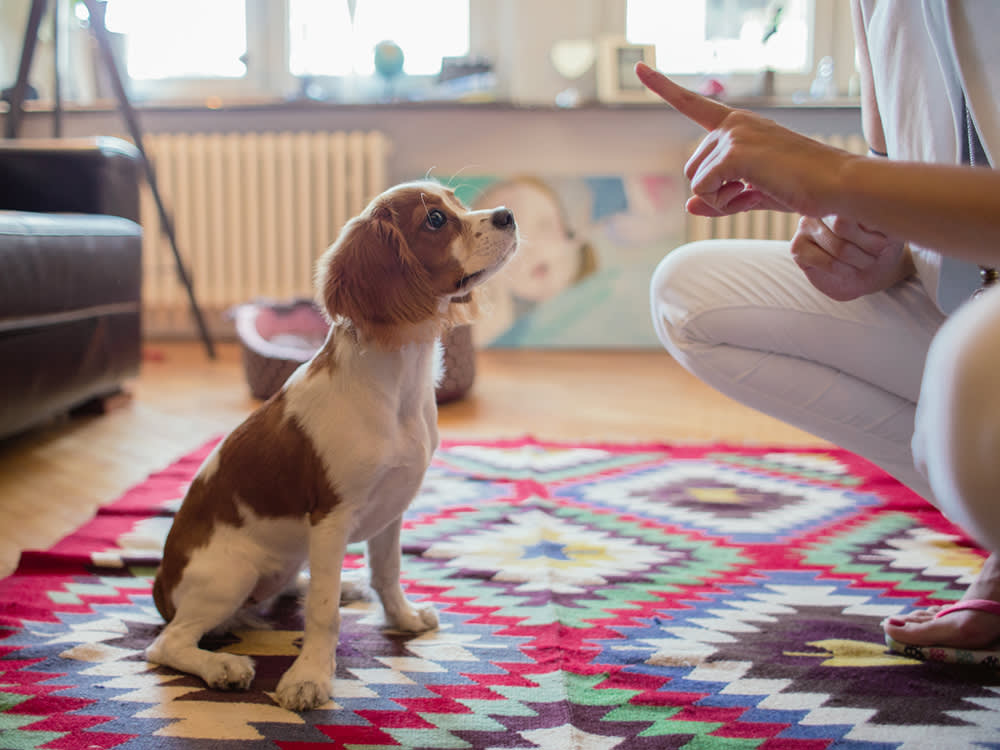
Share Article
Now that your new dog is home (and staring at you), what’s next? Well, after you give them a treat just for being perfect, it’s time to prioritize one thing: Training. Dog training is a key element in new-dog bonding, and no dog is too old to learn new tricks. It’s true: Dogs thrive when their minds are engaged.
To begin, it all starts with a “cue.” In dog training, a cue is a signal to the dog (either verbal or physical, or both) to do a particular behavior. As you and your dog work together, your dog will associate a cue with a new skill or a cool trick.

littleKin™ is Kinship’s home just for puppy and kitten parents. Bop over to check out expert advice, new pet tools, and special deals—all curated for your newest family member.
opens in a new tabRemember, dog training is meant to be rewarding and fun for both of you. So, keep training brief, just five to ten minutes, at the start, and always end on a positive note. Below you’ll find the top eight most important dog training tricks that, with some gentle teaching, your dog can master. Learning these training cues and behaviors allows your dog to reap the benefits of being a well-mannered member of society.
Basic Training Cues for Dogs
Wait
Don’t move forward. Teaching a dog to wait is especially useful at doors. Dogs who wait are easier to take on walks and let in and out of the caropens in a new tab because they don’t go through the door until given permission. The wait cue is also a great safety prompt. Teaching this can prevent a dog from running out a dooropens in a new tab into traffic and reduce some of the chaos inherent in living with dogs. Teaching a dog to wait also allows people to catch up during off-leash walks if the dog has gone ahead.
Watch
Look at my face. Teaching a dog to watch you helps get a dog’s attention and distract them from problematic situations, such as the unexpected presence of another dog.
Sit
Put your butt on the ground. Teaching a dog to sit is one of the easiest things to teach dogs to do. It’s a useful calming cue and — sitting is incompatible with many undesirable behaviors — can be useful in defusing otherwise touchy situations.
Stay
Remain in place until released. Teaching a dog “stay” helps dogs practice self-control. It also keeps dogs in one spot when necessary. Stay is helpful in many situations ranging from “It’s dinnertime and our guests are not dog people” to “I just broke a glass in the kitchen and you’ll cut your paws if you come in here before I clean it up.”
Come
Run to me. Run directly to me. Do not stop at the dead squirrel. Dogs who reliably come when called can safely be given more freedom. Once your dog masters being able to come reliably in your home, move on to environments with higher stimulation.
Release
You are free to go. Teaching a release cue to a dog like “Okay” or “Free” gives your dog permission to stop doing what you previously asked them to do. Used most commonly with “Wait” and “Stay,” it tells your dog that the behavior no longer needs to be performed. For example, your dog can get up and move around if they’ve been staying or go through the door if they’ve been waiting.
Greeting
Say hello without jumping. In this case, the appearance of a new person, rather than a word or a hand signal, is the cue to keep all four paws on the ground. Many dogs do the opposite — jump on every new person — and that can make both pet parents and guests uncomfortable. Few behaviors are more appreciated in dogs than the skill of greeting people politelyopens in a new tab.
A Trick
Performing an endearing trick on cue shows off a dog’s training better than most practical skills. Sure, it may be harder to teach a dog to stay or come when called than to high-five, wave, spin, or roll over, but not many people know that. So, most people will be impressed by the trick and charmed by your pup as a result.

Karen B. London, PhD, CAAB, CPDT-KA
Karen B. London, Ph.D., is a Certified Applied Animal Behaviorist and Certified Professional Dog Trainer who specializes in working with dogs with serious behavioral issues, including aggression, and has also trained other animals including cats, birds, snakes, and insects. She writes the animal column for the Arizona Daily Sun and is an Adjunct Professor in the Department of Biological Sciences at Northern Arizona University. She is the author of six books about training and behavior, including her most recent, Treat Everyone Like a Dog: How a Dog Trainer’s World View Can Improve Your Lifeopens in a new tab.
Related articles
![Dog on leash sitting on a colorful street and looking attentive at their pet parent]() opens in a new tab
opens in a new tabHow to Get Your Dog to Pay Attention to You
Here are some simple steps to pry your pup away from that one spot in the yard they’re obsessed with.
![Boston terrier being stubborn]() opens in a new tab
opens in a new tabDog Training — DIY or Hire a Pro?
When it’s time to call in reinforcements.
![person playing tug with dog]() opens in a new tab
opens in a new tabThe Do’s and Don’ts of Playing with Your Dog
Chase? Wrestle? Tug-o-war? Find out which are fair game.
![Woman in vintage striped pants walking in park while her pet is following the trail. Cute beagle dog sniffs something on the path in morning.]() opens in a new tab
opens in a new tabDoes Your Dog Have a Nose For Scent Training?
This sounds like a competition show waiting to happen.
![Two colorful Great Danes illustration.]() opens in a new tab
opens in a new tabEver Ask Your Dog “Why Are You Like This?” DNA Is the Answer — Kind Of
This study says it’s actually less about what’s in their DNA and more about what’s on it.
![Female dog trainer raising a treat above a beagle dog's head]() opens in a new tab
opens in a new tabYour Dog’s Trauma Triggers Are Everywhere. Fear-Free Training Can Help
“America’s Veterinarian” and the founder of Fear Free Pets, Dr. Marty Becker, on how this method makes vet visits, training sessions, and grooming appointments less stressful for pets.
![girl with blue hair starting puppy training with white dog]() opens in a new tab
opens in a new tabPuppy Training 101: How to Train a Puppy
You gotta start somewhere.
